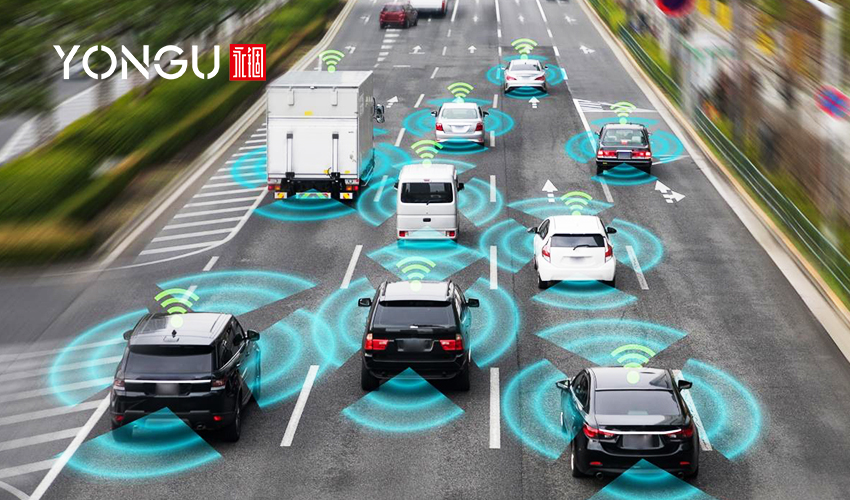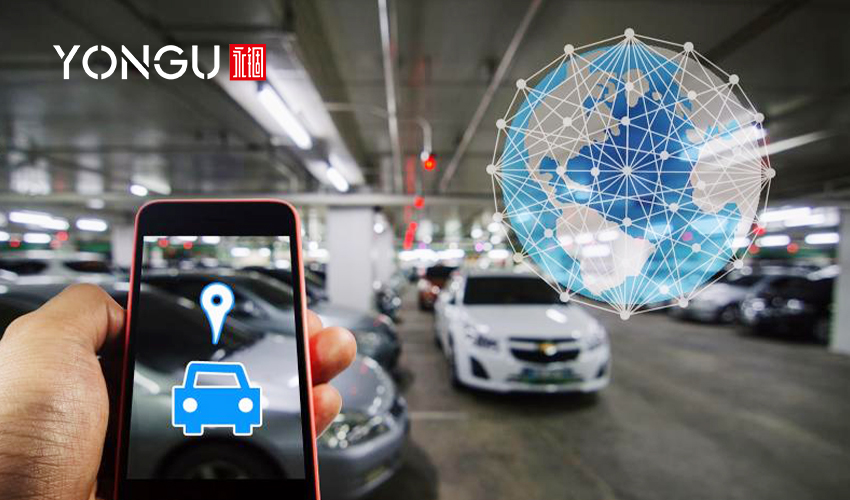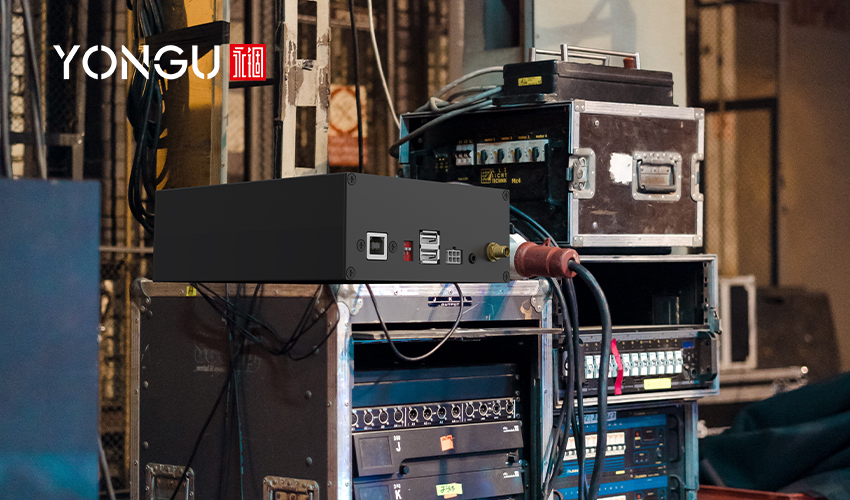Meanwhile, conventional traffic management systems need to be more scalable to manage the volume of urban traffic effectively. Thus, cities must adopt cutting-edge intelligent solutions that better manage traffic and enhance the convenience of drivers, walkers, and passengers.
Knowing the value of the Internet of Things in the transportation sector, Relevant is prepared to assist you in developing your innovative solutions. But first, let's look at the current state of the market.
In the last ten years, the Internet of Things has taken off, becoming the backbone of the intelligent digital solutions desperately needed in logistics and transportation.

TRAFFIC INDUSTRY BENEFICENT USING IoT
Several sections of the transportation industry stand to benefit significantly from the Internet of Things:
Administration of Traffic Lights
As well known, IoT systems consist of many sensors and other information-gathering gadgets. Heat and moisture sensors are built into the traffic lights to collect and analyze meteorological information for more precise signal timing.
The information gathered by these sensors will be transmitted to the traffic lights, subsequently modifying the lights' brightness and intensity based on the conditions outside and the visibility of the road ahead.
With real-time data feeds, traffic lights can adjust better to traffic conditions. Information on heavily used intersections and detour routes might be gathered using IoT sensors placed in strategic locations.
Tolls & Ticketing
Tollbooth lines have grown increasingly prevalent as the number of automobiles on the road has increased. Thanks to automated tools utilizing RFID tags, wait times have been cut, but this might be much better with the help of IoT technologies.
By hooking up a contemporary automobile to the Internet of Things, we can now identify it up to a kilometer away from the point of payment, cancel the charge without the driver having to do anything, and raise the barrier. You may also use a phone-linked digital wallet to make a purchase.

Safer Driving
Automobile collisions occur at a relatively constant rate in modern times. The loss of life in an automobile crash is devastating no matter what led to it.
There would be nobody there to help them, so they would have difficulty getting help. If you can get in touch with a hospital or authorities right away, it will be the most crucial step.
Incidents in inaccessible areas or at odd hours of the day would therefore lose steam if IoT-based solutions were implemented.
Connecting with car owners and warning them of approaching road conditions can be significantly aided by the internet of things.
Cameras equipped with computer vision systems often check roads for damage and oil leaks.
These systems may detect these and other road imperfections and issue a digital warning to oncoming drivers via their vehicle's infotainment system.
However, the Internet of Things-based traffic control system can fix this problem. When the roadside sensors detect a collision, the information is relayed immediately to the traffic management system, which then takes appropriate action to rectify the situation.
Keeping Tabs on Vehicles
Many people will start in 15 minutes, so sensors and video cameras may be placed at various points along the road to keep track of the traffic and send out notifications to the various workers.
If more vehicles are on the road than anticipated, the sensors may prolong the time the signal is green. It is possible to accurately predict the number of vehicles on the road if we know how many two, four, private, or public vehicles will depart at a given time.
All vehicles would be able to go swiftly and without delay. When fewer automobiles are on the road, the red signal may be left longer to let more vehicles leave the building. Sensors can divert traffic and provide other, shorter routes in the case of an unexpected increase in vehicle volume.
The Insightful Parking System
Parking has become a chink in the armor of urban planners everywhere. It's the biggest issue facing those who regulate traffic. The layout of most urban areas makes it difficult, if not impossible, to park a vehicle legally and safely.
Several traffic bottlenecks have formed in crowded city areas due to parallel parking and a lack of parking spaces.
IoT sensors will monitor the parking lot's empty spots, and that information will be relayed to the vehicles that enter the lot.
Congestion in parking lots will be reduced, and drivers will have an easier time finding a spot.

CHALLENGES INTRODUCED BY THE APPLICATION OF IOT TO TRAFFIC MANAGEMENT
When weighed against the drawbacks, the benefits become more apparent. The Internet of Things and Big Data present revolutionary opportunities for intelligent traffic management and solutions, but they also have certain downsides.
Before considering how the Internet of Things (IoT) might exacerbate pre-existing problems with urban infrastructure, including road planning, zoning, and building, it's important to note that modern cities already face such challenges.
Second, these high-end, cutting-edge methods can only be implemented in major urban centers that provide lightning-fast internet connectivity. The entire smart city might fall apart if this link is ever compromised.
Thirdly, there will be a rise in the potential for malicious assaults as the number of connected devices expands.
To make an intelligent traffic system that is impossible to hack, adding another layer of protection on top of the existing one will be necessary. Data privacy must also be safeguarded, which calls for the participation of lawmakers and technologists.
SUMMING UP
A vast array of problems can be solved with the help of the IoT. Traffic management is one application in the context of smart cities. By combining IoT with other technologies like computer vision and artificial intelligence, global cities may be better managed and controlled.
Indicators of a city's safety and viability include its traffic patterns. Manageable population expansion is possible if data and sensors are used efficiently to control traffic.
As intelligent cities increase and reach their full potential over the next few years, IoT will play a crucial role in their continued growth, development, and integration of services and infrastructure.
YONGU SPECIALIZED CUSTOMIZATION SERVICE FOR TRAFFIC CONTROL SYSTEM ENCLOSURES
Busy junctions, pedestrian crosswalks, and thriving neighborhoods require dependable traffic control. Enclosures for traffic signals are critical to the successful management of traffic flows and the enforcement of maximum efficiency in both coordination and movement.
The transportation industry is where YONGU got its start and where we still put much of our focus today. In the current business world, traffic management is just one of many needs that enclosures must meet, and YONGU has decades of expertise in helping clients and communities discover the best solutions. Whether the enclosure's primary purpose is to house electronics for traffic lights, digital message signs, surveillance cameras, intelligent transportation systems (ITS), or the most cutting-edge autonomous vehicle communications, YONGU has you covered.
Depending on the specifics of the traffic control system and the climatic conditions in which the control enclosure will be installed, we provide a wide range of mounting and material options for our cabinets and enclosures to ensure a perfect fit with the state's demanding requirements.
When you need help creating a new electronic enclosure or building an existing one, YONGU is here to help. First, we analyze the intended use case, and then we use computer-aided design (CAD) software to create the best possible enclosure design.
Designing The Unique Prototype
YONGU's services include custom prototype design. We sell goods for both original equipment manufacturers and original design manufacturers. We can assist you in designing your prototype's new form and look if you wish to set your items apart from the competition.
Metal racks, sheet metal enclosures, and custom-molded plastic enclosures are other products that YONGU customizes. Our state-of-the-art technology and expertly educated staff allow us to create and weld nearly any plastic or aluminum enclosure. Industrial enclosures are often made of plastic or aluminum; other materials can be used.
Efficient Problem-Solving
Engineering effective solution is a service that YONGU provides. If you have a 3D model or a hand-drawn design, we can use solid works to turn your idea into a prototype or a production run.
YONGU's goal is to optimize your system following the specifications you have provided by parameterizing the system's design and operating parameters using Multi-Disciplinary Optimization techniques.
Developing Premium Goods
YONGU's services include the preparation of high-quality boxes. Instead of working to make frictionless technology, focus on facilitating streamlined supply networks. The aluminum housing of the highest accuracy and quality will be provided.
For further information and customized product of your requirements, please follow our FACEBOOK for more updates and informations.
You can also contact us at +86 13326782625 or write us [email protected].



